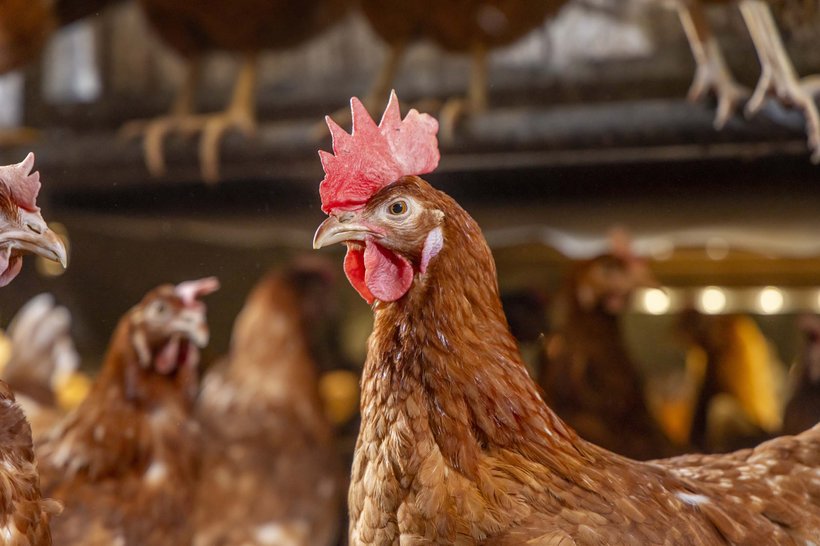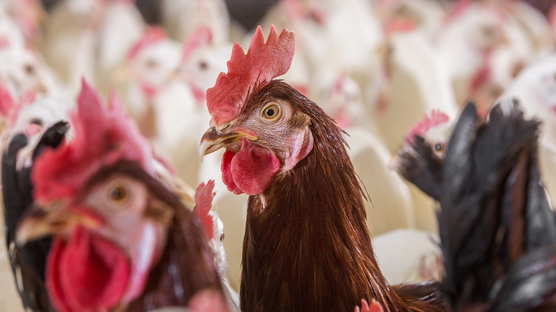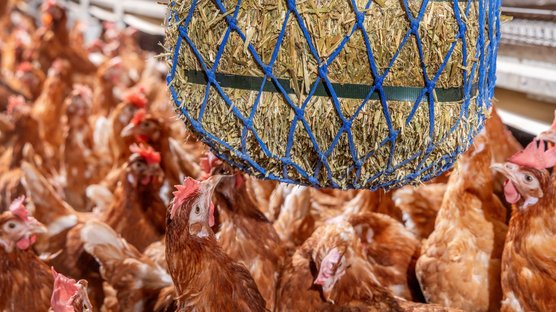
Published on Aug. 27, 2025
Best Practices for Managing Laying Hens with Intact Beaks in Commercial Egg Production
The decision to keep laying hens with intact beaks in commercial egg production is an important step towards promoting the welfare of the birds. While beak trimming has been a common practice to mitigate feather pecking and cannibalism, keeping hens with intact beaks requires a proactive and comprehensive approach to ensure their well-being and maintain optimal production. In this article, we will discuss key tips and tricks for effectively managing laying hens with intact beaks in commercial egg production.
Provide Sufficient Space:
Adequate space is essential for hens with intact beaks to express their natural behaviors and avoid potential aggression. Ensure that the housing system meets or exceeds the recommended space allowances per bird, considering both floor space and perching/roosting area. Sufficient space enables hens to establish their social hierarchy, reducing the likelihood of aggressive behaviors.
Implement Enrichment Activities:
Enrichment activities play a crucial role in maintaining the welfare of hens with intact beaks. Provide a variety of environmental stimuli such as perches, dust bathing areas, pecking objects, and foraging opportunities. Enrichment promotes natural behaviors, reduces stress, and redirects pecking tendencies towards appropriate outlets, minimizing the risk of feather pecking.
Optimize Feeding Strategies:
Proper feeding management is paramount for hens with intact beaks. Ensure access to a nutritionally balanced diet that meets their specific nutritional requirements, including sufficient calcium for eggshell quality. Employ strategies to encourage uniform feed distribution (empty feeder technique, but avoid prolonged periods of feed deprivation), and regular monitoring of feed availability. Avoid excessive competition by providing multiple feeders and optimizing feeder space allocation. Ensure that feed is presented in a manner that is easily accessible and attractive to the hens, the particle size of the feed can influence the hens' feeding behavior and nutrient utilization. Optimal particle size encourages proper feed intake and digestion. Use well-designed feeding systems that minimize feed wastage and allow for easy access. In multi-tiered housing systems (aviaries), provide multiple feeders throughout the facility to prevent overcrowding and excessive competition for feed. This helps minimize stress and aggression. Ensure that the feed is of high quality and free from contaminants. Regularly inspect feed storage facilities and bins to ensure that they are in good condition and protected from pests. Use a first-in, first-out (FIFO) approach when using stored feed to maintain its freshness and nutritional integrity. Alongside proper feed management, access to clean and fresh water is essential for laying hens. Ensure that hens have continuous access to water throughout the day. Monitor water quality regularly, clean waterers frequently, and check for any leaks or blockages in the water supply system.
Manage Ventilation and Temperature:
Maintaining optimal environmental conditions is crucial for the health and productivity of hens with intact beaks. Implement effective ventilation systems to control temperature, humidity, and air quality within the housing facility. Regularly monitor and adjust environmental parameters to ensure hens remain comfortable and minimize stress-related behaviors.
Monitor Flock Health:
Regular health monitoring is vital to detect and address any potential issues promptly. Develop a comprehensive health management plan, including vaccination protocols, parasite control, and routine veterinary inspections. Regularly assess flock behavior, body condition, feather cover, and egg production parameters to identify any signs of distress or disease. Prompt intervention and appropriate treatment can prevent the escalation of health issues.
Implement Flock Management Protocols:
Develop and implement well-defined flock management protocols to ensure consistent care and monitoring. This includes regular flock inspections, record-keeping of production performance, and behavior observations. Establish clear protocols for handling (vaccination) and transporting birds (when transferred) to minimize stress and injury.
Train Staff on Hen Behavior and Welfare:
Education and training of staff are crucial for successful management of hens with intact beaks. Provide comprehensive training on hen behavior, welfare indicators, and appropriate handling techniques. Staff should be able to identify signs of aggression, stress, or health concerns, and take necessary actions to address them promptly.
Ensure Adequate Lighting:
Proper lighting plays a crucial role in the management of laying hens. Provide a lighting program that mimics natural daylight patterns to promote normal physiological processes and behavioral patterns. Consider the use of dimmers or gradual lighting changes to create a smooth transition between day and night. Adequate lighting can help reduce stress, promote better activity levels, and maintain optimal egg production.
Implement Effective Biosecurity Measures:
Maintaining a robust biosecurity program is crucial for preventing the introduction and spread of diseases in the flock. Develop and implement strict biosecurity protocols to minimize the risk of disease transmission. This includes measures such as limiting visitors, practicing proper hygiene, disinfecting equipment, and implementing pest control strategies. Regularly assess and update biosecurity protocols to ensure they are effective in preventing disease outbreaks.
Provide Adequate Nesting Areas:
Laying hens have a natural instinct to seek out secluded and comfortable nesting areas to lay their eggs. Ensure that the housing system provides adequate and suitable nesting areas where hens can lay their eggs in a calm and undisturbed environment. Proper nest design, including appropriate nest material and darkness levels, can encourage hens to lay eggs in the designated nesting areas, reducing the likelihood of floor eggs and associated egg quality issues.
Monitor and Manage Feather Cover:
Feather pecking and cannibalism can still occur in flocks with intact beaks, albeit at a lower prevalence. Regularly monitor feather cover in the flock to detect any signs of excessive feather pecking or feather damage. If feather pecking becomes an issue, intervene promptly by identifying and addressing potential underlying causes, such as nutritional deficiencies, overcrowding, or environmental stressors. Implementing measures to alleviate feather pecking, such as increasing environmental enrichment or providing specific feed structure and feed supplements, can help mitigate the problem.
Promote Behavioral Diversity:
Encouraging behavioral diversity is crucial for the well-being of laying hens. Provide a range of perching heights, nest box options, and environmental enrichment materials to stimulate a variety of natural behaviors. This promotes physical exercise, mental stimulation, and overall hen welfare. Regularly assess the effectiveness of enrichment materials and make adjustments as needed to ensure continued interest and engagement from the hens.
Continuous Improvement and Research:
The field of laying hen management is constantly evolving, and ongoing research and development are vital for improving welfare practices. Stay informed about the latest advancements in the industry, attend conferences, and participate in industry networks to exchange knowledge and ideas. By embracing a culture of continuous improvement, producers can adapt their management practices to align with the latest research findings and industry recommendations, ensuring the best possible outcomes for hens with intact beaks.
In conclusion, managing laying hens with intact beaks in commercial egg production requires a comprehensive approach that encompasses multiple aspects of husbandry, management, and welfare. By providing sufficient space, implementing enrichment activities, optimizing feeding strategies, managing ventilation and temperature, monitoring flock health, implementing flock management protocols, training staff, ensuring adequate lighting, promoting socialization, practicing effective biosecurity measures, providing adequate nesting areas, monitoring feather cover, promoting behavioral diversity, and embracing continuous improvement, producers can create a conducive environment that promotes the welfare and productivity of hens with intact beaks in commercial egg production.



